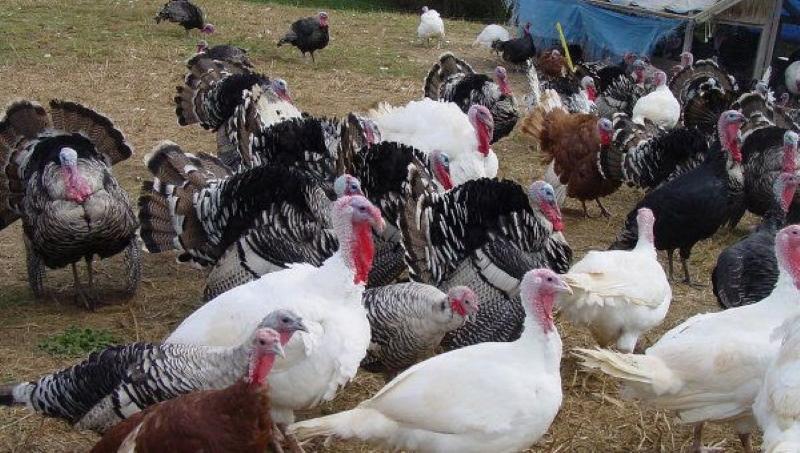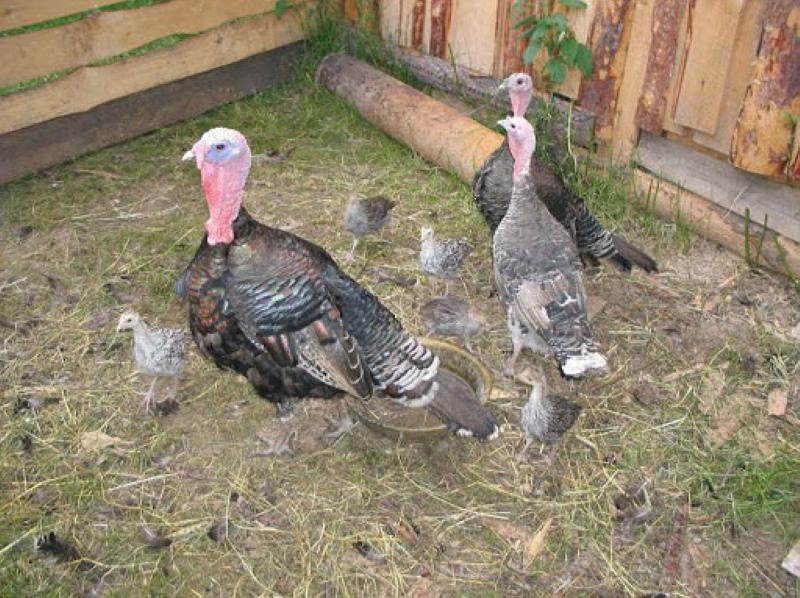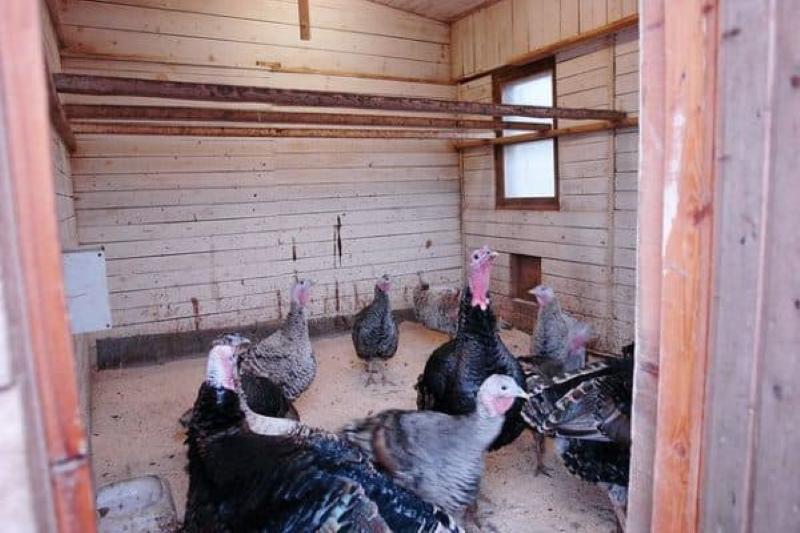Turkeys - breeding and keeping diet poultry at home
 Having a private house with a vegetable garden and at least a small free plot for a farm, many have a bird. And although most often these are chickens, turkeys are the second most popular bird. Turkeys have many advantages, breeding and keeping them at home is not as difficult as it seems. First of all, such good hens cannot be found. The turkey mother is very responsible, vigilantly watching her brood. And most importantly, it can withdraw more than two of them per season. It is also important that both females and males quickly gain weight and reach 30 and 12 kg, respectively. Their meat is very tasty, dietary, and even eggs can be eaten, which is another argument in favor of breeding turkeys. So where to start and what is important to know about raising these birds?
Having a private house with a vegetable garden and at least a small free plot for a farm, many have a bird. And although most often these are chickens, turkeys are the second most popular bird. Turkeys have many advantages, breeding and keeping them at home is not as difficult as it seems. First of all, such good hens cannot be found. The turkey mother is very responsible, vigilantly watching her brood. And most importantly, it can withdraw more than two of them per season. It is also important that both females and males quickly gain weight and reach 30 and 12 kg, respectively. Their meat is very tasty, dietary, and even eggs can be eaten, which is another argument in favor of breeding turkeys. So where to start and what is important to know about raising these birds?
Turkeys - breeding and keeping at home

- eggs and incubator;
- grown chicks;
- a young family (at least 3 females per male).
The last two methods are the most optimal. Taking care of the hatched turkeys is quite troublesome. In the presence of a brood hen, this process occurs almost automatically. The acquisition of grown chicks is also a good option, because they no longer need a hen, they get sick less often and it is easier to feed them.
Despite the fact that turkeys are hardy, it is important to choose the right breed. It must be adapted to the local climate and meet all the desired parameters (weight, egg production, meat taste).
Where to keep turkeys
 Adult birds can live outside, but they still need a warm room for the winter. It is better to have a house for turkeys separate, clean, dry and light. It should also be spacious - at least 0.5 sq. m., with perches at a height of about 1 m from the floor. It is better to make the floor itself wooden and always with a litter (preferably straw or hay).
Adult birds can live outside, but they still need a warm room for the winter. It is better to have a house for turkeys separate, clean, dry and light. It should also be spacious - at least 0.5 sq. m., with perches at a height of about 1 m from the floor. It is better to make the floor itself wooden and always with a litter (preferably straw or hay).
Small turkeys need an even more comfortable environment. They need warmth, especially the first two weeks (up to plus 30 ° C) and light, and around the clock, since small eyesight is weak. From the age of one month, the temperature can be reduced, and the light can be turned on only during the day.
So that the turkeys do not become obese (and they are very prone to this), there must be an area for walking. Several drinkers and feeders are located on it. It is recommended to fence off the walk right away - the bird loves to travel. In addition, this will help protect her, especially young animals, from predators.
What to feed
The diet of turkeys depends on their age. It is better to feed the hatched chicks with a special compound feed... You can add to it:
- chopped green onion feathers;
- finely chopped grass (nettle, wheatgrass, clover, knotweed);
- low-fat cottage cheese;
- from two weeks - boiled eggs and shells from them.
 Adult turkeys need about 300 g of feed per day, but they are unpretentious and eat almost everything. Most of the diet is green food and grains.In addition, you can give a little turtle, bran, and vitamins in the form of bone meal, chalk and a little salt. It is also important to put a container with sand on the yard.
Adult turkeys need about 300 g of feed per day, but they are unpretentious and eat almost everything. Most of the diet is green food and grains.In addition, you can give a little turtle, bran, and vitamins in the form of bone meal, chalk and a little salt. It is also important to put a container with sand on the yard.
As you can see, raising turkeys is no more difficult than raising ducks, geese and chickens. But it has one very significant advantage - it is tasty and dietary meat.